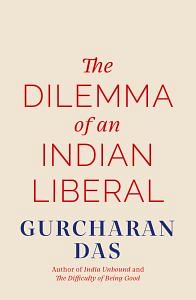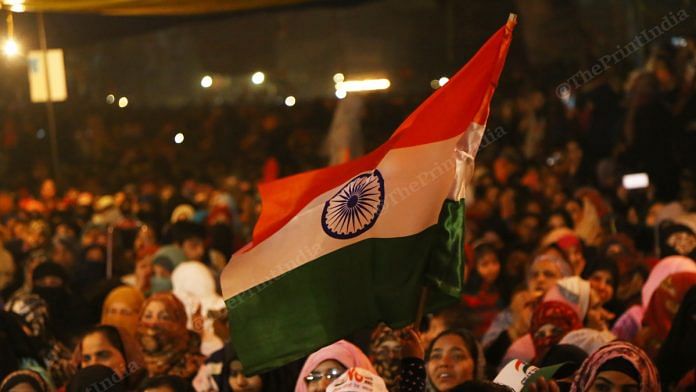For good or for bad, there is a nationalist government in power, and this raises another dilemma. A liberal is against tribalism, and nationalism is a form of tribalism. Hence, a liberal is suspicious of the kind of nationalism that arose in 19th-century Europe when modern states were formed on the basis of identity—of a single religion, or language, or ethnicity—and went on to become instruments of power and violence in the 20th century. This nationalism proclaimed one’s country was superior, sought an enemy and excluded minorities. It drove European nations to colonise the world; it made Germany and Japan militaristic; it led the Nazis to murder six million Jews in the Holocaust. These were the tragedies of this narrow-minded nationalism.
There is a good nationalism, however. It can help a country to modernise, develop with a sense of urgency, as Japan did after the Meiji Restoration in 1867-68. It can bring diverse and plural peoples to unite to throw out an imperial foreign power, as was the case in India during its freedom struggle in the first half of the 20th century. Meiji Japan focused on giving excellent education to all Japanese children, instilling a sense of national unity that helped mould the modern Japanese personality. India was born in 1947 out of good nationalism without shedding an ounce of blood, and it happened in the shadows of Hitler, Stalin and Mao.
That nationalism was Indian, not Hindu or Muslim. It was the creation of Mahatma Gandhi and his associates. He was able to capture the hearts and minds of ordinary people because he spoke to them through traditional words and symbols. He appealed to their imagination with an inclusive, civilisational concept of sadharana dharma, a universal ideal applicable to all human beings—leading to duties such as ahimsa, ‘not hurting another’, or satya, ‘telling the truth’. Unlike the dharma of caste, this dharma of conscience resonated with all Indians. As a result, an incipient sense of unity began to emerge in the popular consciousness, uniting the multitudinous communities of the subcontinent into one national community.
Unfortunately, Mahatma Gandhi died soon after Independence. None of the leaders after him was up to the task of selling the excellent idea of a modern secular republic based on the rule of law. Well-meaning Jawaharlal Nehru was too much of a Western oriented gentleman; he tried but failed to connect with the people as Gandhi had been able to. This is why the ordinary person still believes that the Constitution fell from heaven one day, and does not understand or own it.
Tocqueville has taught us that underlying a liberal democracy is a moral consensus which is expressed daily in ‘habits of the heart’, which is why the great Sanskrit scholar called our Constitution a ‘dharma text’. The political class as a whole has failed not only to create new ‘habits of the heart’ but also a sense of modern national community. This has led to a Hindu nationalism instead of an Indian nationalism. In Milestone 26 in Chapter 5, I tried to answer the question why Hindus, who are 80 per cent of India’s population, felt insecure in their own country.
Also read: Indian nationalism works in practice, but not in theory: Shashi Tharoor
If bad nationalism is about power, a good nationalism is cherishing one’s country’s natural beauty, the memories of childhood, of a particular time, place and a way of life. Bad nationalism is about power, prestige and wanting to dominate others. Bad nationalists are haunted by the belief that the past can be altered. They feel the need to holler, and shout slogans to proclaim their country’s greatness, which often reflects insecurity, low self-esteem and even a feeling of inferiority. Good nationalists are quietly confident, comfortable in their skin, aware of their nation’s strengths and weaknesses. They even wonder why their love has to stop at the border, because they are humans first and citizens of nations afterwards.
Today, the world is witnessing the ill-fated rise of bad nationalisms. They are all driven by a utopian vision of a past when ‘we were great’ before we were beset by irritating immigrants, foreign invaders and minorities. The result is an unhappy polarisation in society, as in India, caused by the notion of a pure Hindu past that began to decline when Muslims came and began to rule. It is typical nationalist history, driven by power and distrust of and hatred for the Other. The danger of bad nationalism is that it runs the risk of turning militaristic.
There is another form of negative nationalism that leads nations to conspiracy theories and paranoia. When I was working for a multinational company, I was sometimes its target. Both Indian and Latin American social scientists used to complain incessantly that their poverty and backwardness were the result of the misdeeds of world capitalism. Multinational companies like mine were the villain in their eyes.
Raul Prebisch, the Argentine economist, had created a ‘dependency theory’, which argued that poor nations would always remain dependent on rich Western nations because of unequal terms of trade. It led to export pessimism and isolationist policies in many countries, including India. As a result, many Third World countries failed to participate in global export booms that began in the 1950s and ’60s. The Asian miracle in the 1980s proved the dependency theory wrong as Asian tigers rose on the basis of the export of manufactured goods. Another danger of bad nationalism is that it finds someone else to blame for one’s troubles.
Today, bad nationalism makes us suspicious of trade treaties. It is still not too late for India to benefit from the positive lessons of East Asia’s international trade liberalisation. Although the world is moving against globalisation, India should reposition its atmanirbhar, or self-reliant, philosophy to mean not just ‘make in India’ but ‘make in India for the world’. India needs to shed export pessimism, bring down tariffs, join the Regional Comprehensive Economic Partnership (RCEP), participate in global supply chains, and reorient its Production Linked Incentive Scheme (PLI) contracts to incentivise exports. Only thus will it bring about ‘the great transformation’ to become a middle-class country. Exclusivism and isolationism are bad, self-defeating ideas for nations and societies.
In my personal life I go further. I feel we all have multiple identities and we ought to resist privileging our national identity. For example, I am an Indian male, but I am also a Punjabi, a father of two, a writer, a vegetarian, a lover of Kishori Amonkar’s music, a cheerleader of our liberal reforms, a fan of the Indian cricket team, and so on. I have different identities, and I choose a particular one depending on the context.
While I am proud of my Indian identity, I don’t feel that I have let the side down if I enjoy Thai green curry or Italian pasta, Bach’s German baroque or Kurosawa’s Japanese films. Our identities also change with time; some people even change their religion; others migrate and change their nationality. The point is that identity is a matter of reasoned choice. Unfortunately, a Hindu nationalist wants to force-fit me into an overarching, rigid religious, nationalistic identity that takes away this choice and impoverishes my plural human spirit.
I think of human beings as diamonds with many faces. Hate begins when we categorise people, choosing one face and ignoring the others. When we reduce people to one dimension, we encourage a fragmented view of humanity. Instead, we should celebrate our plural identities.
 This excerpt from Gurcharan Das’ ‘The Dilemma of an Indian Liberal’ has been published with permission from Speaking Tiger Books.
This excerpt from Gurcharan Das’ ‘The Dilemma of an Indian Liberal’ has been published with permission from Speaking Tiger Books.



